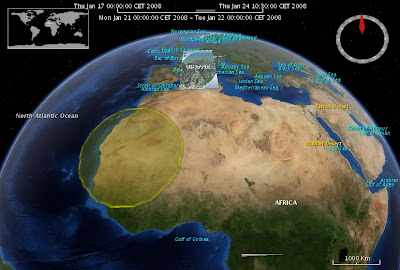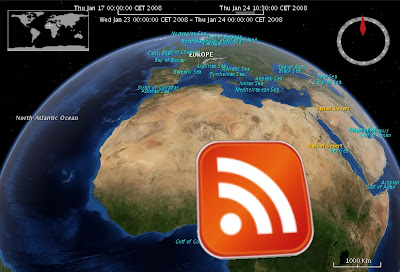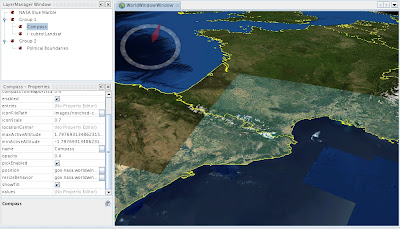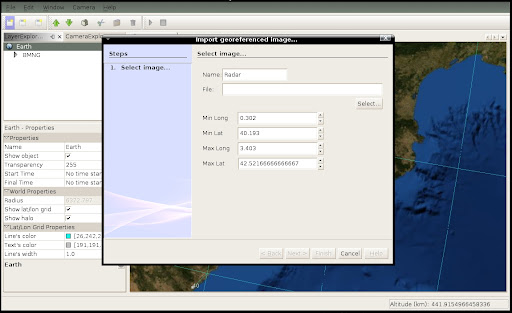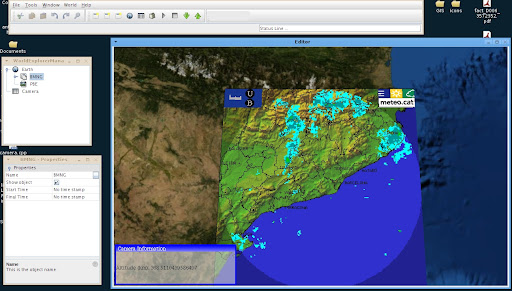It is not any amazing thing but I want to show my first hack on WWJ code. Really this is the second hack, the first is my LayerSet class that allows create set of layers.
I have modified a bit the WWJ source code (in the
SurfaceTileRenderer class) to allow some layers make use of the, until now not used, property
opacity.
For example you can put a BMNGSurfaceLayer but you can change its opacity, or better said, you can invoke the
setOpacity method but the
opacity value is never used in the render process and thus the layer never changes its opacity.
Take a look at this two screenshots. The first is a normal set of layers:
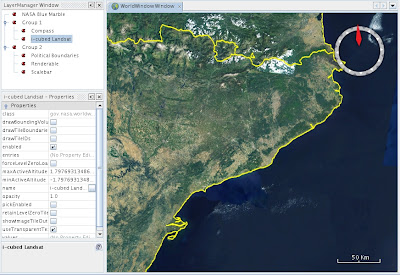
The second shows the CountryBoundariesLayer and the landsat layer with opacity changed:
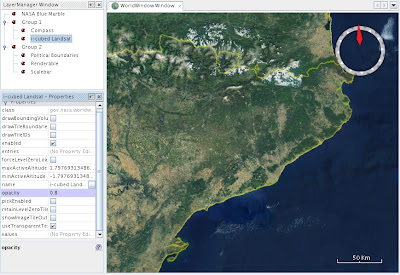
Which is the secret?
You know some layers like BMNGSurfaceLayer, CountryBoundariesLayer and USGS* are based on BasicTiledImageLayer that extends the TiledImageLayer class. The later class uses the
SurfaceTileRenderer to render the tiles.
In TiledImageLayer.draw() method change:
dc.getGeographicSurfaceTileRenderer().renderTiles(dc, this.currentTiles);by
dc.getGeographicSurfaceTileRenderer().renderTiles(dc, this.currentTiles, this);In SurfaceTileRenderer change:
public void renderTiles(DrawContext dc, Iterable tiles) {by
public void renderTiles(DrawContext dc, Iterable tiles, AbstractLayer layer) {and put this code (only the later 'if):
...
if (!dc.isPickingMode()) {
gl.glTexEnvi(GL.GL_TEXTURE_ENV, GL.GL_TEXTURE_ENV_MODE, GL.GL_REPLACE);
} else {
gl.glTexEnvf(GL.GL_TEXTURE_ENV, GL.GL_TEXTURE_ENV_MODE, GL.GL_COMBINE);
gl.glTexEnvf(GL.GL_TEXTURE_ENV, GL.GL_SRC0_RGB, GL.GL_PREVIOUS);
gl.glTexEnvf(GL.GL_TEXTURE_ENV, GL.GL_COMBINE_RGB, GL.GL_REPLACE);
}
if(layer!=null){ // Set transparency gl.glTexEnvi(GL.GL_TEXTURE_ENV, GL.GL_TEXTURE_ENV_MODE, GL.GL_MODULATE); gl.glColor4f(1, 1, 1, (float)layer.getOpacity()); }...
Finally, create overload the method (to not affect other calls):
public void renderTiles(DrawContext dc, Iterable tiles) { this.renderTiles(dc, tiles, null); }And thats all.








